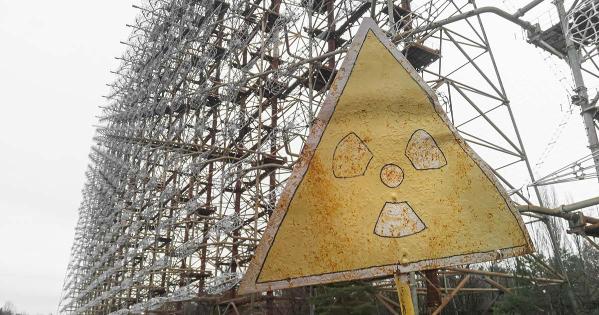4 Questions about the Nuclear Threat during the Cold War Versus Today

During a July 28 event at the Center for Strategic and International Studies, British national security adviser Sir Stephen Lovegrove spoke about the ongoing evolution of the post-Cold War international order and how that impacts the global nuclear threat. He said, “…the Cold War’s two monolithic blocks of the USSR and NATO, though not without alarming bumps, were able to reach a shared understanding of doctrine that is today absent. Doctrine is opaque in Moscow and in Beijing, let alone Pyongyang or Tehran.”
As the war in Ukraine that began with Russia’s invasion in February 2022 continues, with global impacts on everything from fuel prices to food security, the specter of nuclear weapons use can never be ignored. We got a few minutes with SIS professor and former dean James Goldgeier to answer some questions about the nuclear threat, how the current global situation compares to earlier periods during the Cold War, and how President Biden’s efforts to repair European alliances that were damaged during the Trump administration have helped unify the global response to Putin’s aggression.
- As you look specifically at current US-Russia relations and compare them to US-Soviet relations during pivotal points of the Cold War, including the period of the 1950s through the Cuban Missile Crisis and the 1983 Able Archer exercise, how would you assess the current nuclear threat?
- Nuclear weapons use remains extremely low, but it’s always dangerous when leaders threaten it, as Putin has done since the start of his expansion of the Russian war against Ukraine in February 2022—after joining the leaders of the US, China, France, and the United Kingdom in early January in affirming that “a nuclear war cannot be won and must never be fought.” It’s not the first time he or his advisors have done so. In 2008, he threatened Ukraine and Poland over possible US missile defense systems, and in 2014, Russian Foreign Minister Sergei Lavrov raised the prospect of nuclear strikes if Ukraine sought to retake Crimea, which Russia illegally annexed in March of that year. There were additional Russian nuclear threats against Europe and the United States in 2018-19. It’s always worth thinking through the possibility of escalation, as a recent group of authors of the RAND corporation have done, given the dangers inherent in the current war, and we should never become complacent.
- Though the Chinese were central to the Korean War in the 1950s, the Cold War was largely perceived and experienced as a standoff between two powers: the US and NATO in the West and the USSR in the East. How does the emergence of China as a global economic and nuclear power complicate analogies between the Cold War and today?
- The Cold War was a global military, political, economic, ideological, and diplomatic clash between two opposing systems. Every corner of the world became a possible flashpoint, as the superpowers battled each other across Europe, Asia, the Middle East, Latin America, and Africa. China is clearly seeking to expand its influence in the world, but the rivalry hasn’t yet reached the same level as the US-Soviet Cold War. One big difference is China’s role in the global economy. The Soviet Union kept its bloc largely separate economically. China is deeply embedded in the global economy. While there is much talk today about “decoupling” the two leading economies, this is not a simple task, and the costs would be great for both sides. Clearly the biggest flashpoint is Taiwan; miscalculation by one or both great powers could escalate quickly.
- Is Russia using provocative actions like the ongoing nuclear threat and, of course, the invasion of Ukraine, to maintain relevance in a world that increasingly looks to China and the US as the dominant powers? If so, does that make Russia more dangerous than it was during the Cold War?
- Russia remains dangerous as long as its leaders—and public—maintain an imperial mindset. This war started because Vladimir Putin believes that Ukraine does not have a right to exist as an independent country. If the Kremlin were to accept that the borders of the Russian Federation are set and that territories outside those borders do not belong to it, that would defuse a lot of tension. But as long as the Russian government continues to hold imperialist views, European security is threatened. That is why so many countries have sought to join NATO since the Cold War ended.
- President Biden was elected in 2020 for largely domestic reasons, including the pandemic and calls for social justice, but he was also perceived as the candidate best prepared to lead US foreign policy. In your opinion, has President Biden’s Cold War grounding and experience helped or hindered his dealings with Russia as president?
- Joe Biden knows Putin well from his time as a US Senator and the Vice President. He came into office hoping for a “stable and predictable” relationship with Putin. That was always unlikely, but Biden’s efforts to engage Putin in 2021 paid off in 2022 with America’s European allies. Since he had tried to reach out to Putin, when it came time to building support among US allies against the horrific Russian actions against Ukraine, he was able to be extraordinarily successful. His management of American alliance relationships has been quite impressive, particularly given the hostility his predecessor showed to those same allies.
